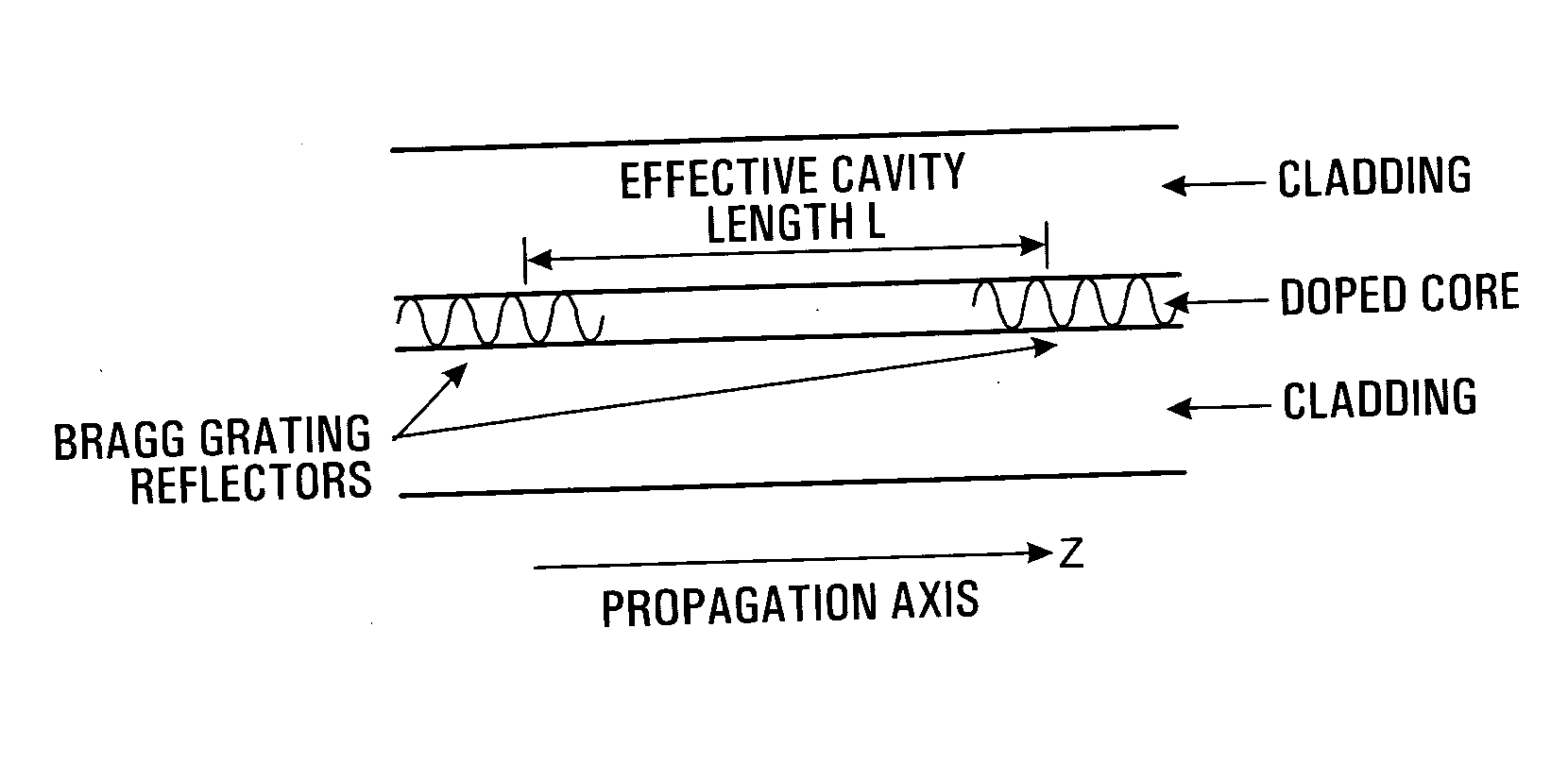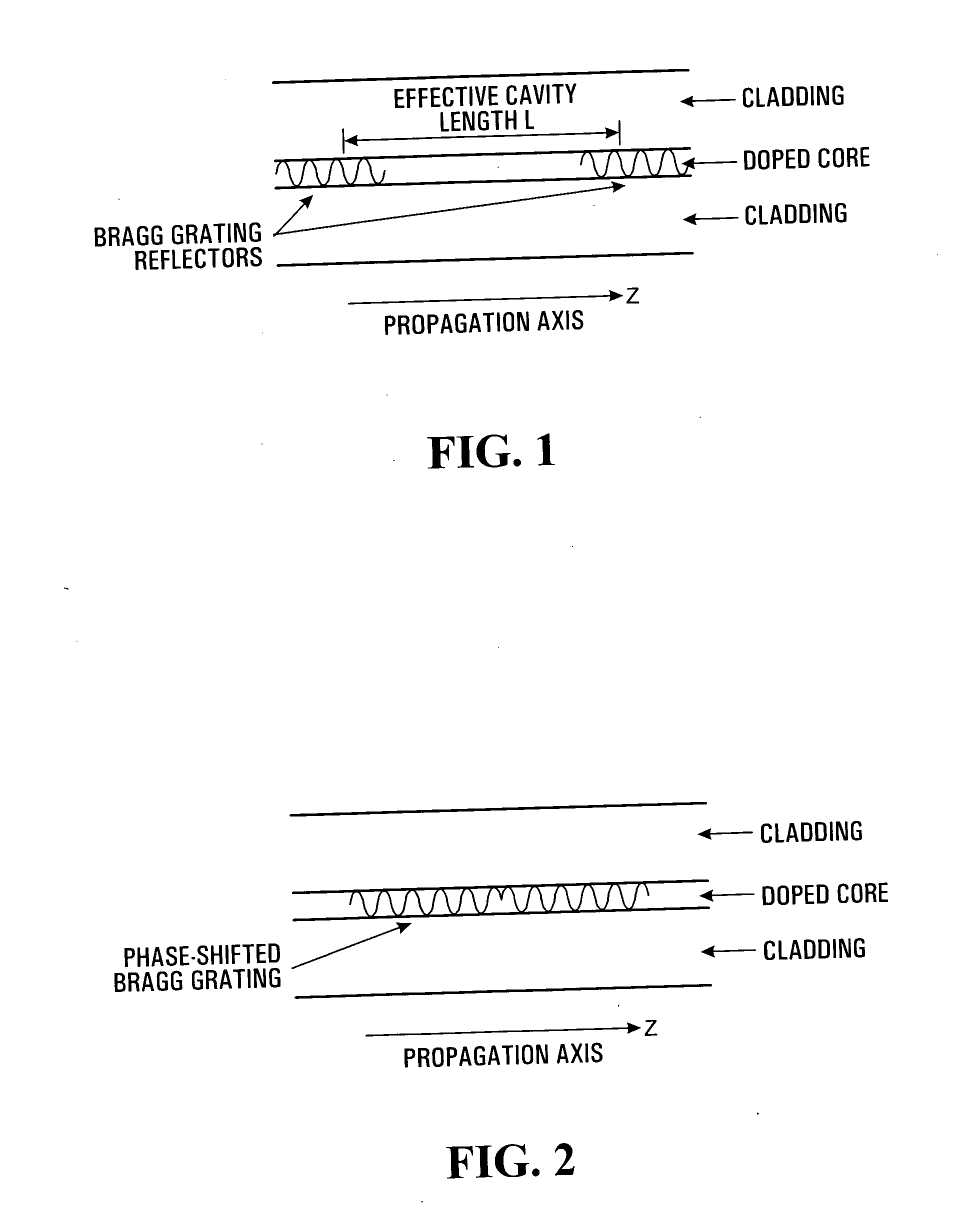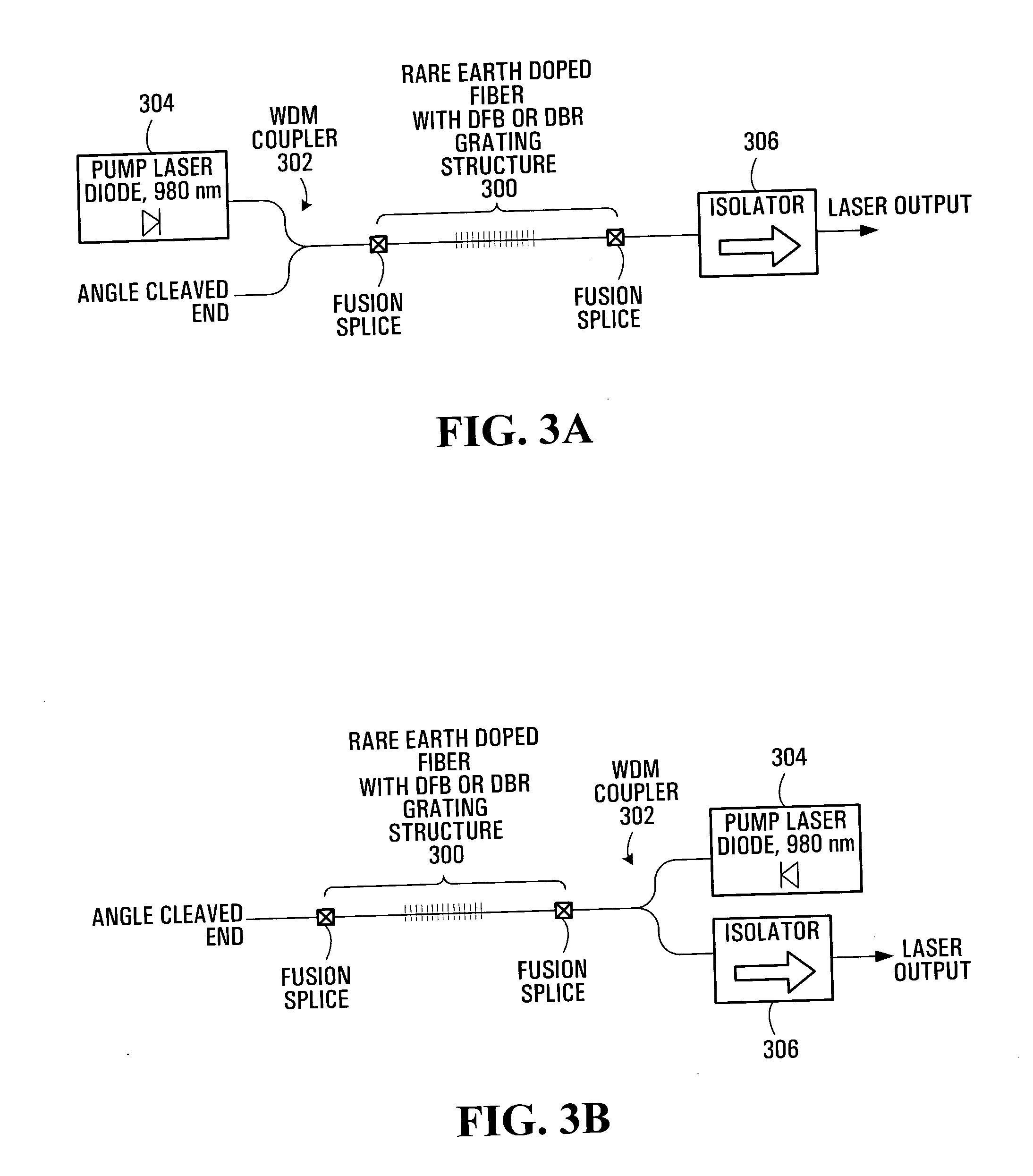Multi-wave length laser source
a laser source and multi-wavelength technology, applied in the field of lasers, can solve the problems of reducing the emission properties of fiber lasers, affecting the performance of short single-mode fiber lasers, and avoiding laser resonators
- Summary
- Abstract
- Description
- Claims
- Application Information
AI Technical Summary
Benefits of technology
Problems solved by technology
Method used
Image
Examples
Embodiment Construction
Before explaining the disclosed embodiment of the present invention in detail it is to be understood that the invention is not limited in its application to the details of the particular arrangement shown since the invention is capable of other embodiments. Also, the terminology used herein is for the purpose of description and not of limitation.
With reference to FIG. 8a, there is shown a simplified diagram of a multi-wavelength laser source 801 in accordance with a specific example of implementation of the invention. As shown, the multi-wavelength laser source 801 includes a laser source unit 800, a gain section 802 and an output 806. The laser source unit 800 is adapted for generating an energy signal and applying this energy signal to the gain section 802. The gain section 802 includes a gain medium having a superstructure grating 804. The superstructure grating 804 forms a distributed Fabry-Perot-like structure. The superstructure grating causes a multi-wavelength laser signa...
PUM
 Login to View More
Login to View More Abstract
Description
Claims
Application Information
 Login to View More
Login to View More - R&D
- Intellectual Property
- Life Sciences
- Materials
- Tech Scout
- Unparalleled Data Quality
- Higher Quality Content
- 60% Fewer Hallucinations
Browse by: Latest US Patents, China's latest patents, Technical Efficacy Thesaurus, Application Domain, Technology Topic, Popular Technical Reports.
© 2025 PatSnap. All rights reserved.Legal|Privacy policy|Modern Slavery Act Transparency Statement|Sitemap|About US| Contact US: help@patsnap.com



